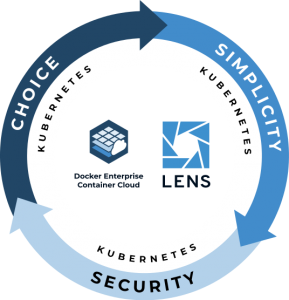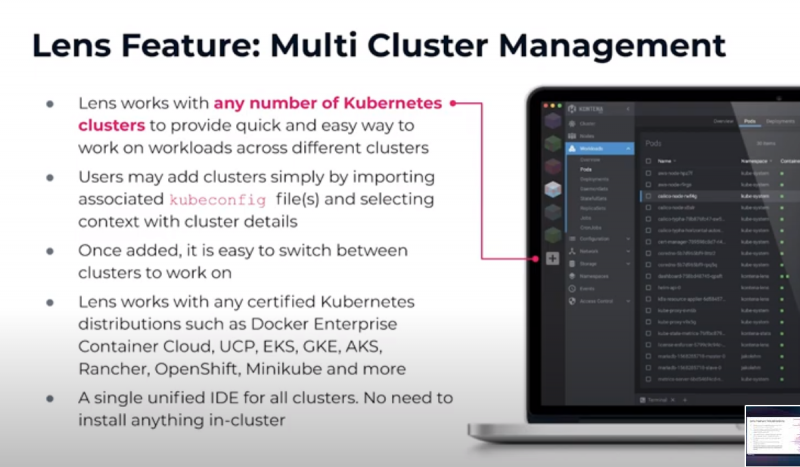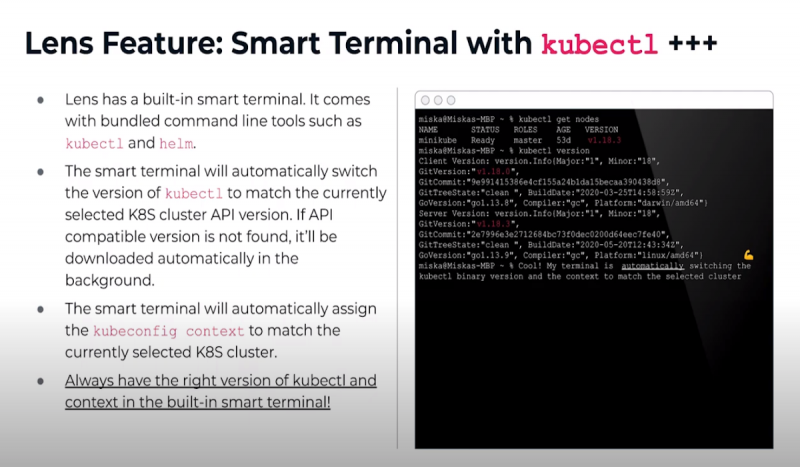 CLOUD
CLOUD
 CLOUD
CLOUD
 CLOUD
CLOUD
Lens, the open-source Kubernetes integrated development environment managed by open-cloud expert Mirantis Inc., has been stacking up the stats since it launched in March of 2020. As of writing, the project has accumulated hundreds of thousands of downloads, and the its page — k8slens.dev — shows more than 64,000 “happy users,” over 8,500 stargazers (aka GitHub “likes”), and 443 forks (repository copies).
According to Mirantis, which bought Lens in August 2020, users include developers at major corporations such as Apple, ecommerce platform Rakuten Inc. and Adobe Inc.
But what is it that is making admins and developers flock to Lens in the thousands? Afterall, Kubernetes seems to be doing OK on its own. Dubbed “the gold standard for container orchestration and deployment,” by no less an authority than the Microsoft information technology community, Kubernetes has become the defacto choice for container management.
But Kubernetes has a problem: It’s really, really complex, and its existing dashboard has limited functionality.
“Many people and organizations are struggling to adopt Kubernetes at scale,” said Miska Kaipiainen, senior director of engineering at Mirantis.
Giving an overview of Lens during the recent Mirantis Launchpad event, Kaipiainen said this perception of Kubernetes as hard to master is misleading. “Kubernetes is not too difficult or complex; people will get this perception only when they are using primitive or very limited tools,” he said.
And, according to Adrian Ionel, co-founder and chief executive officer of Mirantis, “Lens fills a major gap in moving people from being interested in Kubernetes to being productive with Kubernetes.”
Eliminating Kubernetes complexity has been a bit of a mission for Mirantis over the past year. In November 2019, the company purchased Docker’s enterprise business in a deal that gave the company control of the Docker Enterprise platform. Then, in February 2020, Mirantis added Finnish cloud container services provider Kontena to its portfolio. Kontena was home to the original developers of Lens, including Kaipiainen. In 2015 when Lens was conceptualized, the idea was to provide an easy, visual way to manage Kubernetes.
“When we are dealing with very complex technologies … if you can visualize it and make it more interesting to look at … it will kind of help with the adoption, and it’s kind of more acceptable to the market,” Kaipiainen told theCUBE’s Stu Miniman, in an exclusive interview during the Mirantis Launchpad event.
Combining the Docker Enterprise container cloud with Lens’ visibility creates “the end-to-end solution for harnessing the power of Kubernetes and radically improving the speed of business,” Kaipiainen said.

Image: Mirantis, Inc.
One of the first outside users of Lens was website optimization company Supervisor.com. Since taking over the project, Mirantis has stabilized the tool, according to Matti Paksula, founder and chief technology officer of Supervisor. In an interview with theCUBE during Mirantis Launchpad, he described how rather than managing Kubernetes from the command line, Lens creates a real-time visual representation of the code.
“If you try to delete something with Lens, you move your mouse on top of the pod. And if it’s getting deleted, you know because it just disappears from your screen; it’s not there anymore,” Paksula said.
Making Kubernetes management visible is a key feature of Lens. By building in integration with the Prometheus open-source monitoring and alerting toolkit, Mirantis has increased visibility without the need for create custom dashboards.
“Lens will provide automatic visualization for all supportive resource types, including the aggregated usage,” Kaipiainen said. “Developers, or to be honest Ops and IT admins too, will get all the data they need always in the right context.”
Lens 3.6, the first major update since Mirantis took over the project, was released in early September, adding cluster access using kubeconfig files and additional smart terminal configuration options. These and other major features were explored by Kaipiainen during his live session at Mirantis Launchpad.
“Unlike multi-cluster management systems designed for ops and IT admin people, this is multi-cluster management from the developer’s point of view,” said Kaipiainen, explaining how clusters are added simply by importing the kubeconfig file and selecting the cluster context. “The great thing about Lens is that you will get one unified IDE across all your clusters no matter what the flavor, and there is absolutely nothing that you need to install in cluster.”

Image: Mirantis, Inc.
The built-in smart terminal comes with bundled command line tools such as kubectl and Helm. This is different from the native terminal because “the smart terminal will always have kubectl command available and it will automatically switch the version of kubectl to match the currently selected Kubernetes cluster API,” according to Kaipiainen.
The smart terminal also automatically assigns the correct kubeconfig context to match the selected Kubernetes cluster. “When you use Lens with built-in smart terminal, you are always using the right version of kubectl and context,” Kaipiainen added.

Image: Mirantis, Inc.
Keeping Lens free and open source is important to Mirantis.
“Our focus as a leader in this open-source project is to … look for ways for collaboration with other vendors in the cloud native technology ecosystem and focus on making features that are adding most value for our users,” Kaipiainen said.
As the project matures, enhancing developer workflows and enabling teamwork are two priorities on Mirantis’ to-do list, with new releases of Lens already in the pipeline. According to the project’s GitHub repository milestones, 3.6.5 is 93% complete and 4.0 halfway done.
“There are so many great things coming, it’s impossible to list everything,” Kaipiainen said.“ Really this is just beginning; we want to bring the entire Kubernetes ecosystem together.”
To view all presentations from the Mirantis Launchpad 2020 event, click here.
(* Disclosure: TheCUBE was a paid media partner for the recently concluded Mirantis Launchpad 2020 digital event. Neither Mirantis Inc. nor other sponsors have editorial control over content on theCUBE or SiliconANGLE.)
THANK YOU